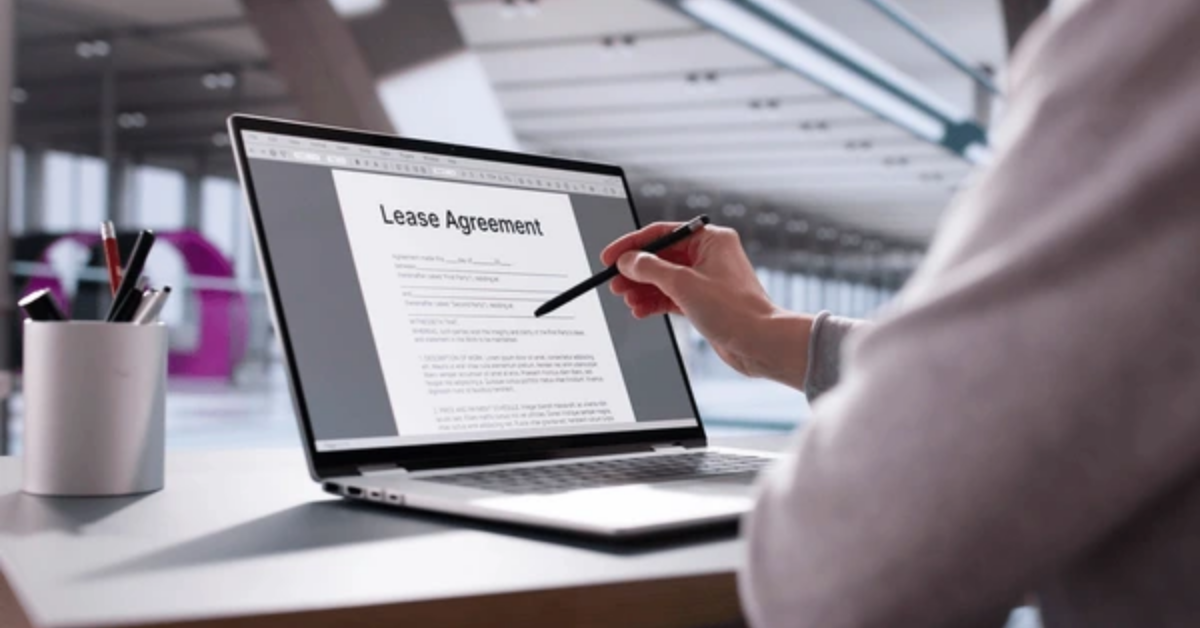A well-structured procurement plan is the backbone of any successful business operation. Whether you’re sourcing IT hardware, services, or supplies, having a clear strategy ensures cost savings, reduced risks, and smooth supply chain management.
Companies often face unexpected delays, budget overruns, and vendor issues without a proper plan for the IT procurement process. This is especially critical in IT procurement, where factors like lead times, vendor selection, and compliance greatly affect efficiency.
In this guide, we’ll break down the procurement management plan, explore key components, and provide actionable steps for a successful procurement plan ✨
What is a procurement plan?
A procurement plan is a structured strategy for acquiring products or services essential for business operations. It outlines what needs to be purchased when it is needed, how it will be sourced, and the budget allocated for procurement.
Why is a procurement plan important?
Without a procurement plan, companies risk delays, cost overruns, and supply chain disruptions. Businesses, especially those managing IT hardware procurement, rely on careful planning to ensure devices, software, and other IT resources are delivered on time, within budget, and sourced from reliable vendors.
A strong procurement plan also plays a key role in risk management, helping businesses anticipate potential challenges such as vendor delays, price fluctuations, or compliance issues.
Who needs a procurement plan?
A procurement plan benefits businesses of all sizes, but it is particularly crucial for:
- Project managers: Ensuring materials, tools, or services are available when needed to prevent project delays.
- Procurement teams: Managing vendor selection, negotiating contracts, and overseeing the procurement process.
- IT departments: Handling IT procurement processes for hardware, software, and security services.
With a solid procurement strategy in place, businesses can optimize costs, streamline processes, and mitigate risks.
Next, let’s explore the key components of a procurement plan.
6 key components of a procurement plan
A well-structured procurement plan consists of several critical components that ensure smooth purchasing, cost savings, and risk mitigation. Whether you are handling IT hardware procurement or general business purchases, these elements help project teams and procurement teams make informed decisions.

Needs assessment: identifying what to procure
The first step in procurement planning is identifying the specific products or services needed. A detailed needs assessment helps businesses:
- Determine the exact requirements for a project or department
- Avoid unnecessary purchases and optimize resource allocation
- Align procurement activities with business goals
For example, in IT procurement, a company might assess whether employees need laptops, software licenses, or cybersecurity solutions based on their roles and responsibilities.
Budget allocation: planning for cost efficiency
Once needs are identified, businesses must allocate budgets effectively. A well-planned budget ensures:
- Cost savings by negotiating better deals with vendors
- Avoiding overspending by aligning procurement costs with financial plans
- Maintaining flexibility for unexpected expenses
A strong procurement strategy includes forecasting expenses and reviewing past spending patterns to create a realistic budget.
Vendor selection strategy: choosing the right suppliers
Selecting the right vendor is crucial for quality assurance and reliability. A vendor selection strategy includes:
- Conducting market research to compare vendors
- Evaluating suppliers based on price, quality, and reliability
- Sending a request for proposal (RFP) to shortlisted vendors
For IT procurement processes, vendor selection is particularly important as companies need suppliers that offer secure, compliant, and scalable solutions.
Procurement timeline and scheduling
Timely procurement prevents delays in operations or projects. Businesses need to account for:
- Lead times required for sourcing and shipping
- Coordinating orders with business milestones
- Seasonal factors that may affect supply chain efficiency
For example, if a company is launching a new remote work policy, their procurement plan should ensure that IT hardware and software are available before the rollout date.
Risk management and compliance
A procurement management plan must address potential risks that could disrupt the supply chain. Key areas to focus on include:
- Vendor reliability: having backup suppliers to mitigate risks
- Regulatory compliance: ensuring adherence to data security, environmental, and financial laws
- Market volatility: preparing for price fluctuations or supply shortages
Procurement software can help monitor compliance and track risks in real time.
Performance monitoring and review
A procurement plan should not end once purchases are made. Businesses must track performance to ensure:
- Vendors meet quality and delivery expectations
- Costs align with the initial budget
- The procurement process continuously improves
Regular evaluations allow businesses to refine their procurement planning process, improve efficiency, and enhance cost savings.
How to create an effective procurement plan
Creating a procurement plan involves a series of strategic steps to ensure smooth purchasing, cost savings, and risk mitigation. Whether you’re managing an IT procurement process or sourcing general business supplies, a structured approach ensures efficiency.
Step 1: Define procurement objectives
Before purchasing anything, businesses must clearly outline their procurement objectives. These should align with overall company goals and could include:
- Reducing costs while maintaining quality
- Ensuring timely delivery to prevent project delays
- Strengthening vendor relationships for long-term partnerships
- Enhancing security and compliance, especially in IT hardware procurement
Step 2: Conduct market research
To make informed purchasing decisions, procurement teams must conduct market research. This helps businesses:
- Identify reliable suppliers that offer competitive prices
- Compare different procurement strategies used in the industry
- Evaluate technological trends that might impact purchasing decisions
For example, if a company is procuring IT hardware, they may research new procurement software solutions that offer better tracking and security features.
Step 3: Define procurement requirements
After conducting research, businesses must list specific procurement requirements, including:
- Types of products or services needed
- Quantity of each item
- Quality standards to ensure compliance and durability
- Expected delivery timeline to match business operations
For IT procurement, this might include specifications like RAM size, processor type, and security features for company laptops.
Step 4: Select vendors strategically
A well-planned vendor selection process ensures that businesses work with suppliers who meet their expectations. The procurement team should:
- Create a request for proposal (RFP) to gather competitive bids
- Evaluate suppliers based on pricing, reputation, and past performance
- Consider vendors with strong supply chain networks to minimize lead times
For companies managing IT procurement, vendor selection must prioritize security, compliance, and long-term support.
Step 5: Allocate budget effectively
Budgeting is a critical part of procurement planning. Businesses should:
- Forecast procurement expenses based on market trends
- Allocate funds based on priority needs
- Set aside contingency funds for unexpected costs
A procurement management plan must ensure financial sustainability while optimizing spending for maximum efficiency.
Step 6: Develop a procurement timeline
A well-structured timeline helps businesses avoid supply chain delays. Project teams should:
- Identify key procurement activities and deadlines
- Account for supplier lead times to prevent disruptions
- Coordinate procurement schedules with business operations
For example, if a company is hiring new employees, their IT procurement process must ensure that laptops and software licenses are ready before onboarding.
Step 7: Implement risk management strategies
To protect procurement operations from uncertainties, businesses should:
- Identify potential risks, such as vendor failures or price fluctuations
- Develop backup supplier options in case of disruptions
- Ensure all purchases comply with legal and security standards
For instance, a company purchasing IT equipment must ensure that devices meet cybersecurity regulations to protect sensitive business data.
Step 8: Monitor and review procurement performance
Procurement planning is an ongoing process. After implementation, businesses should:
- Track supplier performance and contract fulfillment
- Compare actual spending against budget forecasts
- Continuously refine procurement strategies to improve efficiency
Companies using procurement software can automate tracking and reporting, making the review process more efficient. Advanced procurement management software can integrate with existing ERP systems to provide real-time visibility into spending patterns, vendor performance metrics, and compliance status across all departments.
A well-crafted procurement plan doesn’t just improve purchasing decisions—it creates a structured approach that keeps costs under control and operations running smoothly.
To see how these principles apply in practice, let’s explore some real-world examples of IT procurement planning.
Examples of an IT procurement plan
A well-structured IT procurement plan covers both hardware and software to ensure businesses have the necessary tools to operate efficiently.
Example 1: IT procurement plan for hardware
Scenario: A company with a hybrid workforce needs to procure laptops, accessories, and network equipment for new employees while managing costs and ensuring timely delivery.
Procurement approach:
- Needs assessment: The procurement team determines the required devices based on employee roles (e.g., high-performance laptops for developers, standard laptops for business teams).
- Budget allocation: A per-device budget is set to balance cost savings with performance needs.
- Vendor selection: The company evaluates hardware suppliers based on pricing, warranty options, and lead times. A request for proposal (RFP) is sent to multiple vendors for comparison.
- Procurement timeline: Orders are scheduled in batches to align with new employee onboarding cycles, ensuring minimal wait times.
- Risk management: The procurement team establishes a backup vendor in case of supply chain disruptions and ensures compliance with corporate security policies.
- Performance monitoring: Device performance and vendor reliability are tracked using procurement software to optimize future purchases.
Example 2: IT procurement plan for software
Scenario: A growing SaaS company needs to procure collaboration tools, cybersecurity software, and cloud storage solutions for its remote teams while ensuring compliance and security.
Procurement approach:
- Needs assessment: The IT and procurement teams identify software required for different departments, including project management tools, CRM software, and cybersecurity solutions.
- Budget allocation: The company decides between subscription-based pricing (SaaS) or one-time licensing fees based on cost-effectiveness.
- Vendor selection: The company conducts market research to compare different software providers, prioritizing security, scalability, and integrations.
- Procurement timeline: Software licenses are activated and assigned before new employees start, ensuring seamless access to required tools.
- Risk management: The procurement team ensures software compliance with data protection laws, implements multi-factor authentication, and sets up contingency plans for contract renegotiations.
- Performance monitoring: The IT department tracks software usage, ensuring licenses are not wasted and evaluating renewal costs for budget optimization.
How Esevel simplifies IT procurement and management
A well-structured IT procurement plan is essential for cost savings, operational efficiency, and risk reduction. Whether sourcing hardware, software, or IT services, businesses need a clear procurement strategy to support growth and prevent disruptions.
Esevel simplifies the procurement planning process by offering an all-in-one IT platform that helps businesses:
- Procure and deploy IT hardware across 88+ countries
- Manage software licenses and user access to reduce costs and security risks
- Track and secure IT assets with a centralized dashboard
- Automate onboarding and offboarding for seamless IT transitions
- Get 24/5 IT support to troubleshoot issues and minimize downtime







